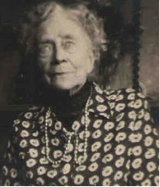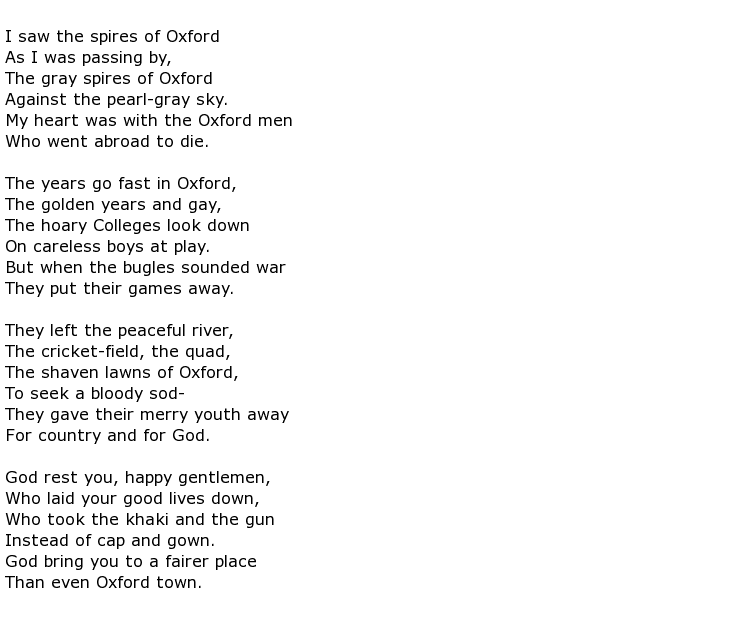 Winifred Mabel Letts was an English poet, novelist and playwright who lived much of her life in Ireland. In 1914 some of her poetry was set to music by the Irish composer Sir Charles Villiers Stanford who took six poems and called them A Sheaf of Songs from Leinster. The best known of these is one called A Soft Day.
Winifred Mabel Letts was an English poet, novelist and playwright who lived much of her life in Ireland. In 1914 some of her poetry was set to music by the Irish composer Sir Charles Villiers Stanford who took six poems and called them A Sheaf of Songs from Leinster. The best known of these is one called A Soft Day.
She came into the world in 1882, on the 10th February in Salford, a town which is now part of the large conurbation called Greater Manchester. Her father was an English clergyman and the family often holidayed in Dublin, her mother’s place of birth. Mother and daughter moved there on the death of the Reverend Letts, setting up home at Blackrock, County Dublin. Having begun her education in the south east of England, Winifred now went to the Alexandra College in Dublin.
Winifred’s first literary successes came in the early 1900s when she wrote 2 1-act plays. These were performed at the Abbey Theatre in Dublin – one in 1906; the other three years later. She followed this up with a change of direction – books for both children and adults. After having a story published in The Irish Review at the beginning of 1912, the title of which was

and she then produced her first collection of poetry the following year:

She was a nurse during the First World War, stationed at least for part of the time near her place of birth in Manchester. Winifred still found the time to write though and a collection of poems came out in 1916. This collection was an extremely popular book and her publishers relaunched it the following year, but this time used the title of one of the best poems as the overall title for the collection. It was now called

This poem is reproduced below and is a poignant description of wartime Oxford, that magnificent university city. But the main thrust of the piece is the tragic loss of the many young men whose studies and future glories were forfeited because they chose to march off to war instead. As the conflict rumbled on this poem caught the imagination of the people left behind:

The ‘Publisher’s Note’ that prefaced the book explained the reason for the change of volume title very well. It said:

Also included in this book was another harrowing tale called The Deserter which describes the terror and hopelessness of the soldier who turns and runs, instead of standing to fight, and who then pays the ultimate price for his actions. In stark contrast to her wartime writing, Winifred published a book for children in 1933 called Knockmaroon, which is considered by many to be her best book. It tells the story of her early years in Dublin, living at her grandparents’ house.
She married late in life, at the age of 44, her husband being a widower. When he died, in 1943, she went to England for a time to live with her sisters in the pretty town of Faversham, Kent. The pull of Ireland was never far away though, and she returned there in 1950. She lived in a cottage in Killiney before moving into a nursing home during her later years.
Winifred Mabel Letts died in 1972, at the grand old age of 90.

